Kia Ceed vs Tesla Model 3 - Differences and prices compared
Costs and Efficiency:
When it comes to price and running costs, the biggest differences usually appear. This is often where you see which car fits your budget better in the long run.
Kia Ceed has a significantly advantage in terms of price – it starts at 23500 £, while the Tesla Model 3 costs 34300 £. That’s a price difference of around 10800 £.
Engine and Performance:
Power, torque and acceleration say a lot about how a car feels on the road. This is where you see which model delivers more driving dynamics.
When it comes to engine power, the Tesla Model 3 has a decisively edge – offering 460 HP compared to 140 HP. That’s roughly 320 HP more horsepower.
In acceleration from 0 to 100 km/h, the Tesla Model 3 is decisively quicker – completing the sprint in 3.10 s, while the Kia Ceed takes 9.50 s. That’s about 6.40 s faster.
In terms of top speed, the Tesla Model 3 performs evident better – reaching 262 km/h, while the Kia Ceed tops out at 197 km/h. The difference is around 65 km/h.
There’s also a difference in torque: Tesla Model 3 pulls decisively stronger with 660 Nm compared to 253 Nm. That’s about 407 Nm difference.
Space and Everyday Use:
Beyond pure performance, interior space and usability matter most in daily life. This is where you see which car is more practical and versatile.
Seats: offers more seating capacity – vs .
In curb weight, Kia Ceed is clearly lighter – 1298 kg compared to 1822 kg. The difference is around 524 kg.
In terms of boot space, the Tesla Model 3 offers distinct more room – 594 L compared to 395 L. That’s a difference of about 199 L.
When it comes to payload, Kia Ceed evident takes the win – 490 kg compared to 333 kg. That’s a difference of about 157 kg.
Who wins the race?
The Tesla Model 3 proves to be leaves the rival little chance and therefore becomes our DriveDuel Champion!
Tesla Model 3 is the better all-rounder in this comparison.
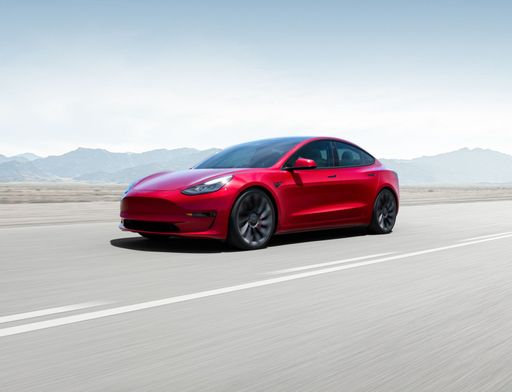 @ Tesla, Inc.
@ Tesla, Inc.
Tesla Model 3
Costs and Consumption
View detailed analysis
Engine and Performance
View detailed analysis
Dimensions and Body
View detailed analysis
Kia Ceed
The Kia Ceed is a sensible, stylish hatchback that gives buyers more than they'd expect for the money, blending practical space with crisp, modern looks. It drives with measured confidence and comes loaded with user-friendly kit, so you can enjoy daily life behind the wheel without breaking into a sweat.
details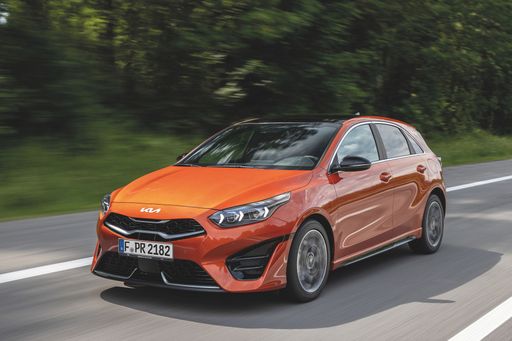 @ Kia Corporation
@ Kia Corporation
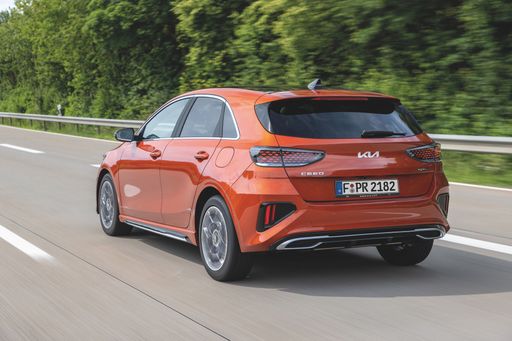 @ Kia Corporation
@ Kia Corporation
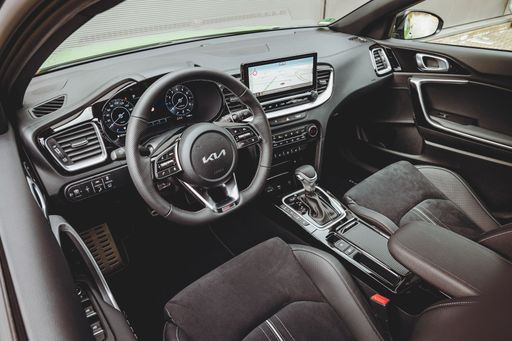 @ Kia Corporation
@ Kia Corporation
Tesla Model 3
The Tesla Model 3 slices through daily commuting with a silent, confident shove that makes petrolheads reassess their life choices, while its minimalist cabin feels more like a slick gadget gallery than a traditional car interior. For buyers after a fuss-free, tech-forward electric with plenty of grin factor and low running drama, it’s hard to beat—just don't be surprised when the car updates itself overnight.
details @ Tesla, Inc.
@ Tesla, Inc.
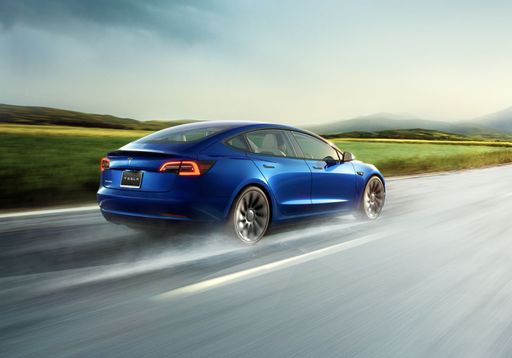 @ Tesla, Inc.
@ Tesla, Inc.
 @ Tesla, Inc.
@ Tesla, Inc.
 @ Tesla, Inc.
@ Tesla, Inc.
 @ Kia Corporation
@ Kia Corporation
|
 @ Tesla, Inc.
@ Tesla, Inc.
|
|
|
|
Costs and Consumption |
|
|---|---|
|
Price
23500 - 26300 £
|
Price
34300 - 50100 £
|
|
Consumption L/100km
6 - 6.4 L
|
Consumption L/100km
-
|
|
Consumption kWh/100km
-
|
Consumption kWh/100km
13.2 - 16.7 kWh
|
|
Electric Range
-
|
Electric Range
550 - 750 km
|
|
Battery Capacity
-
|
Battery Capacity
64.5 - 83 kWh
|
|
co2
137 - 146 g/km
|
co2
0 g/km
|
|
Fuel tank capacity
50 L
|
Fuel tank capacity
-
|
Dimensions and Body |
|
|---|---|
|
Body Type
Hatchback
|
Body Type
Sedan
|
|
Seats
5
|
Seats
5
|
|
Doors
5
|
Doors
4
|
|
Curb weight
1298 - 1372 kg
|
Curb weight
1822 - 1929 kg
|
|
Trunk capacity
357 - 395 L
|
Trunk capacity
594 L
|
|
Length
4315 mm
|
Length
4720 - 4724 mm
|
|
Width
1800 mm
|
Width
1850 mm
|
|
Height
1447 mm
|
Height
1431 - 1440 mm
|
|
Max trunk capacity
1253 - 1291 L
|
Max trunk capacity
-
|
|
Payload
478 - 490 kg
|
Payload
303 - 333 kg
|
Engine and Performance |
|
|---|---|
|
Engine Type
Petrol, Petrol MHEV
|
Engine Type
Electric
|
|
Transmission
Manuel, Automatic
|
Transmission
Automatic
|
|
Transmission Detail
Manual Gearbox, Dual-Clutch Automatic
|
Transmission Detail
Reduction Gearbox
|
|
Drive Type
Front-Wheel Drive
|
Drive Type
Rear-Wheel Drive, All-Wheel Drive
|
|
Power HP
100 - 140 HP
|
Power HP
283 - 460 HP
|
|
Acceleration 0-100km/h
9.5 - 13.2 s
|
Acceleration 0-100km/h
3.1 - 6.1 s
|
|
Max Speed
178 - 197 km/h
|
Max Speed
201 - 262 km/h
|
|
Torque
172 - 253 Nm
|
Torque
420 - 660 Nm
|
|
Number of Cylinders
3 - 4
|
Number of Cylinders
-
|
|
Power kW
74 - 103 kW
|
Power kW
208 - 338 kW
|
|
Engine capacity
998 - 1482 cm3
|
Engine capacity
-
|
General |
|
|---|---|
|
Model Year
2024
|
Model Year
2025
|
|
CO2 Efficiency Class
E
|
CO2 Efficiency Class
A
|
|
Brand
Kia
|
Brand
Tesla
|
What drivetrain options does the Kia Ceed have?
The Kia Ceed is available as Front-Wheel Drive.
The prices and data displayed are estimates based on German list prices and may vary by country. This information is not legally binding.
